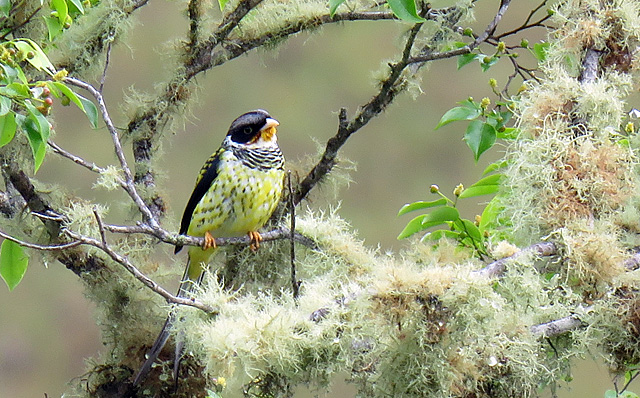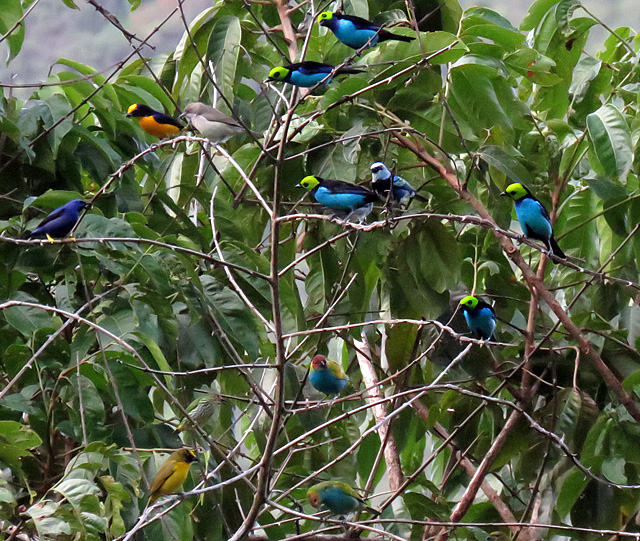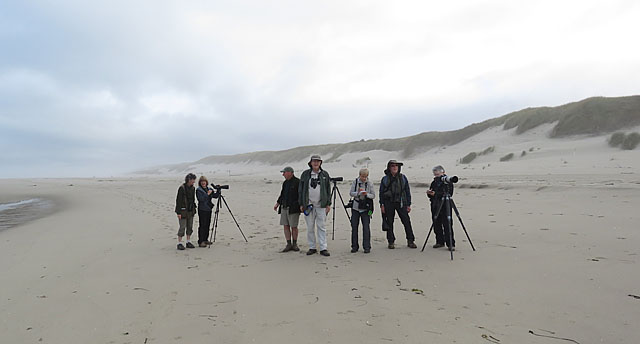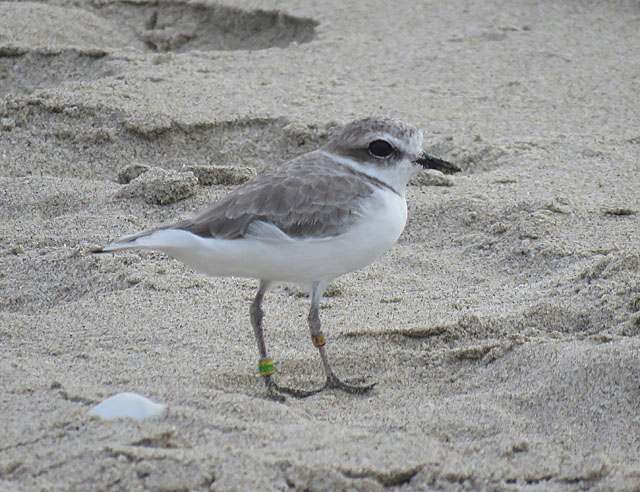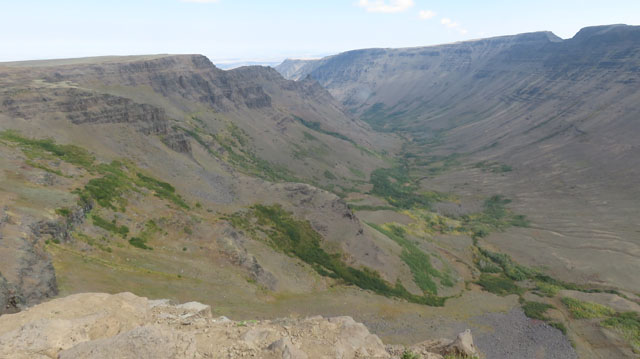From the Field
November 7:
Gavin Bieber on the second part of his recently completed tour, Australia: Queensland and New South Wales
The second half of our Eastern Australia set of tours kicked off on the idyllic Lady Elliot Island, on the southern edge of the Great Barrier Reef. Here we marveled at nesting Black Noddies just feet from our lenses, as well as a host of other seabirds and a wide array of marine life. A little to the south around the famous O’Reilly’s Lodge where the birds are almost tame, with forest birds often coming to investigate your shoelaces. Wonga Pigeons and the gorgeous Regent and Satin Bowerbirds are common visitors around the lodge, where they look over (or from) your shoulder for any dropped tidbits. We had some rain occluding our visit here (though it didn’t impact our bird list) which brought out an array of frogs including the colourful and impressively large Orange-eyed Treefrog.
After O’Reilly’s we flew down to Sydney where we spent some time in the stunning and large Royal National Park that lies just a little to the south of the city. This park provided a great and scenic backdrop for our final day and a half, with a family group of Powerful Owls on a day roost and very approachable Sulphur-crested Cockatoos. We finished the Eastern Tour with an impressive 300 species, and an amazing 436 species for the two tours combined. It is always with a touch of sadness that I board the plane to leave this amazing continent, and I very much look forward to next year’s duo of tours!
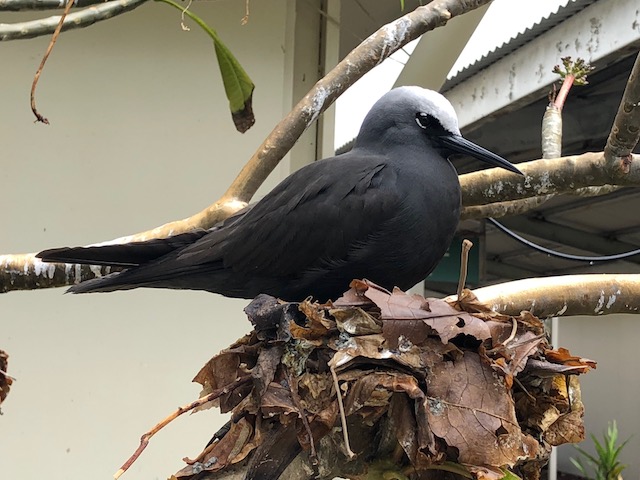
Black Noddy
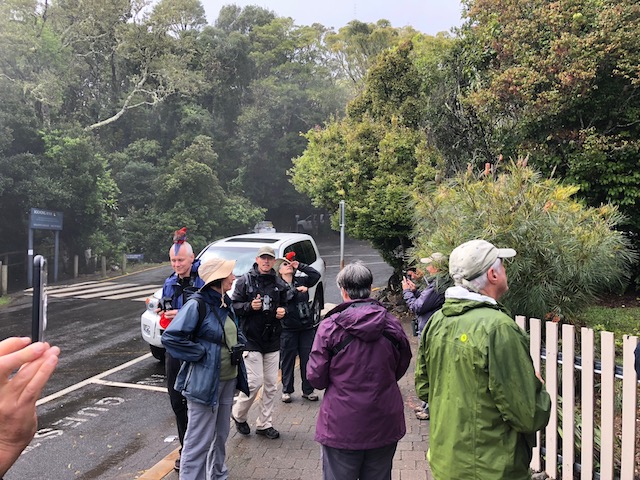
An O'Riellys scene
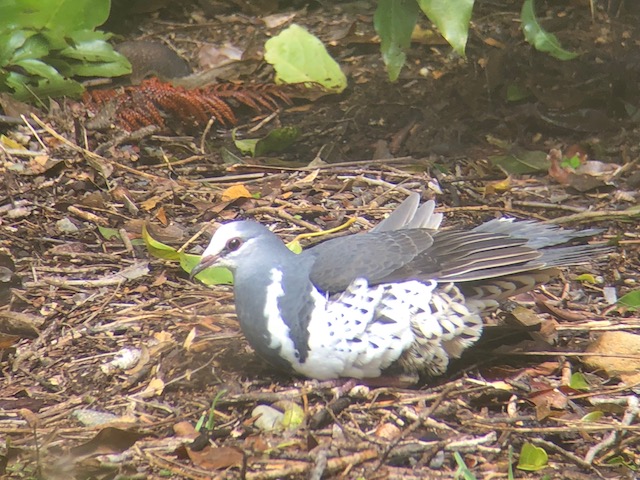
Wonga Pigeon
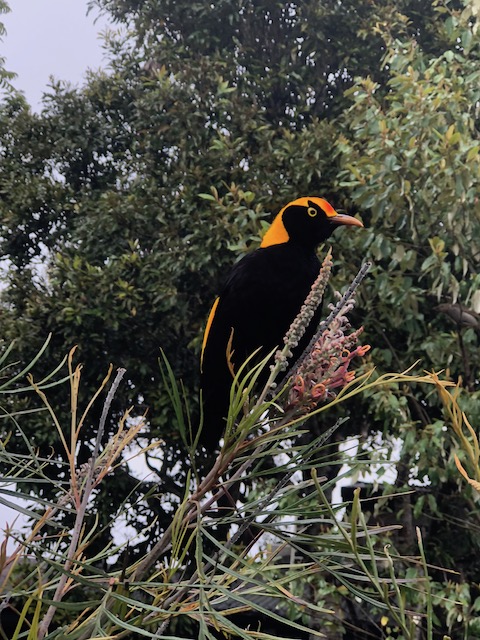
Regent Bowerbird
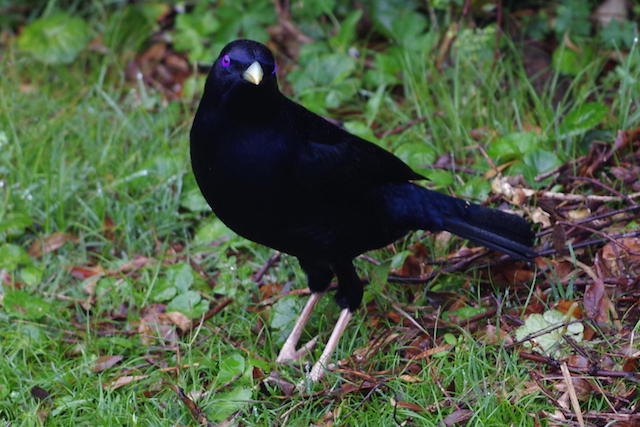
Satin Bowerbird
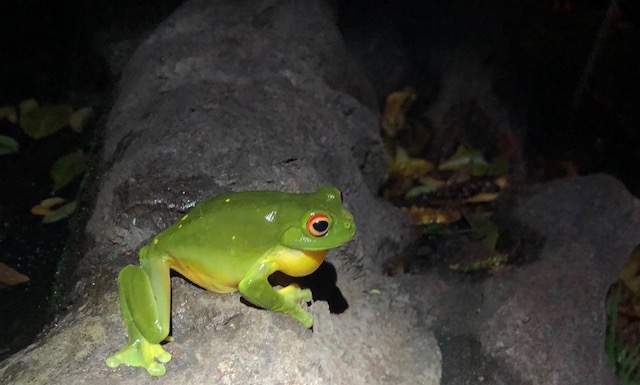
Orange-eyed Treefrog - Image: Kent Anderson
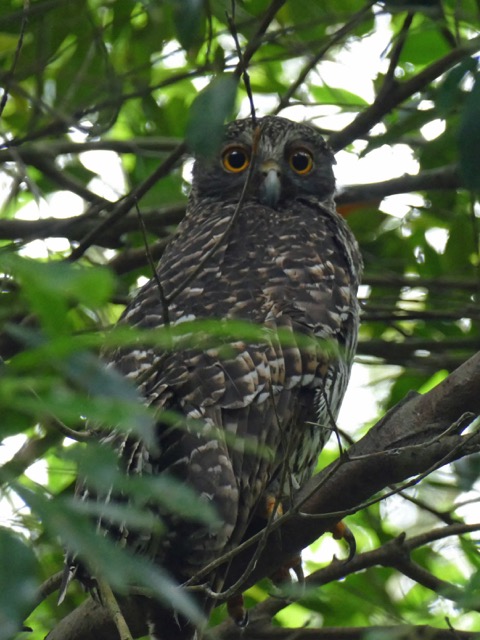
PowerfulOwl - Image: Bob Pease
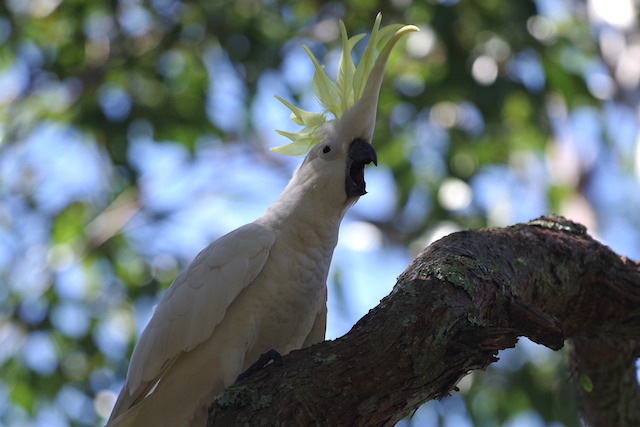
Sulphur-crested Cockatoo - Image: Kent Anderson
October 30:
Rich Hoyer on his recently completed tour, Bolivia: Barba Azul Nature Reserve, Sadiri Lodge, and the Apolo Valley
You can’t help but marvel at Bolivia’s diversity when you experience the extreme variety of landscapes and habitats as we did on our just completed inaugural tour of the northern departments of La Paz and Beni. We started in the high Andes, visiting Lake Titicaca and the gradual pass of Pumasani on our way to and from the Apolo area – where we birded in the fog, snow, and sun, but happily without the usual annoying wind. Titicaca provided us with easy and delightful families of the flightless Titicaca Grebe, but it was a bold Plumbeous Rail that stole the show on our second morning there.
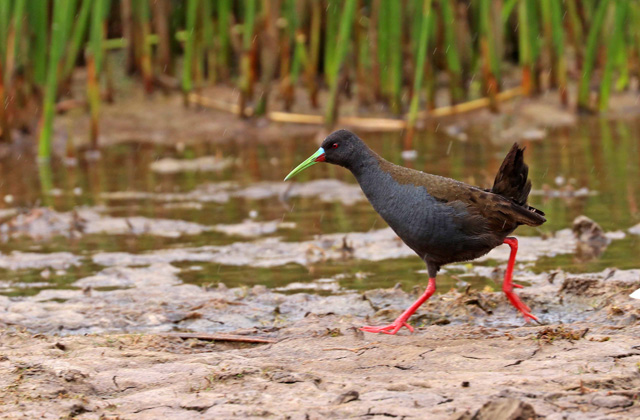
Plumbeous Rail Photo: David Fisher
The high Andes had some exciting ground-tyrants, earthcreepers, miners, canasteros, and others. A frequent sight along the roadsides (and at our picnic sites as we departed) were beautiful Mountain Caracaras.
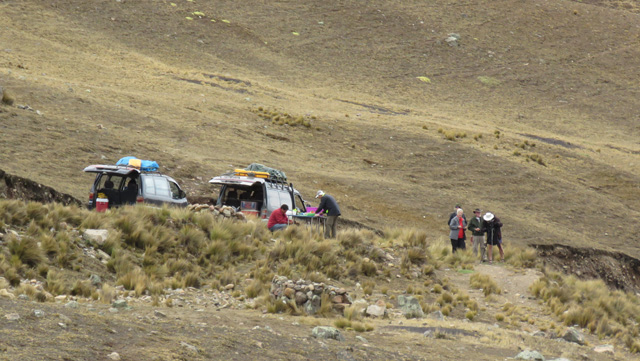
Picnic Lunch N of Charazani Photo by Rich Hoyer
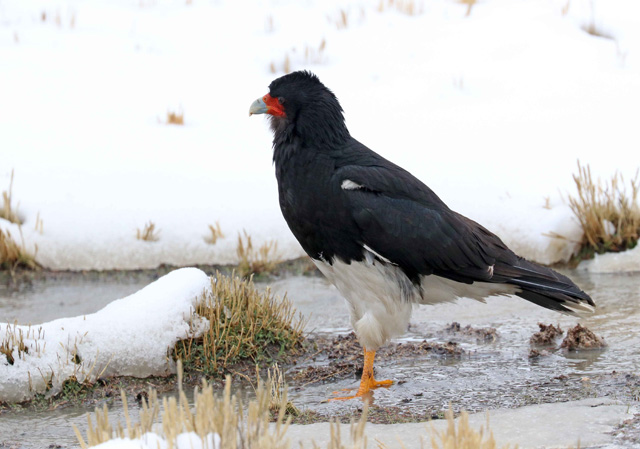
Mountain Caracara Photo:David Fisher
We had some truly incredible experiences with world-class birds during our time in the Apolo-Atén areas. Finding a pair of the endemic “Palkachupa” subspecies of Swallow-tailed Cotinga at our breakfast location was a bit of a surprise, as we hadn’t yet driven to the location where we were supposed to start looking for them.
Swallow-tailed Cotinga Photo: Rich Hoyer
Another exciting moment came when we found a bird that few people have seen, as its precise distribution and migratory behavior have yet to be fully determined, and it doesn’t even have a name yet. First discovered by Dan Lane and Gary Rosenberg while they were leading a WINGS tour in Peru in 2000, they saw it again in 2003, and that was the last time a birding group like ours had seen one until now. Rumor has that the final manuscript with the species description may be published within a year.
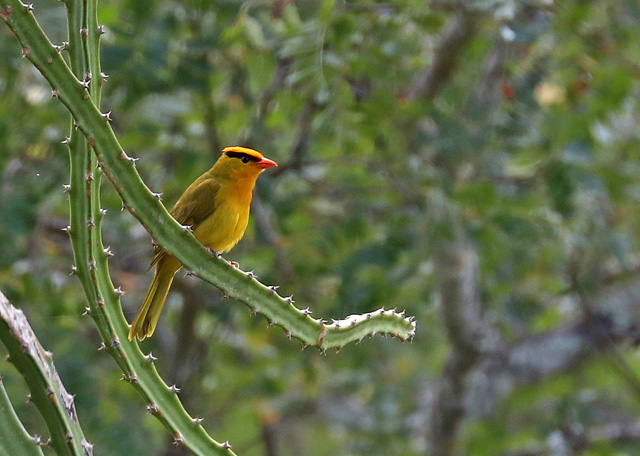
'San Pedro' Tanager Photo: David Fisher
Next came our time at the lovely Sadiri Lodge, with its wonderful food, delightfully hospitable staff, and super competent birding guides, where we experienced a mix of Amazonian and Andean foothill specialties. Band-bellied Owl, Sharpbill, and the scarce Yungas Tyrannulet were of among the species belonging to the former community, while a lucky encounter with a pair of Hairy-crested Antbirds, Yellow-shouldered Grosbeaks, and a pair of White-throated Woodpeckers in a flock near the lodge were some species with more Amazonian affinities.
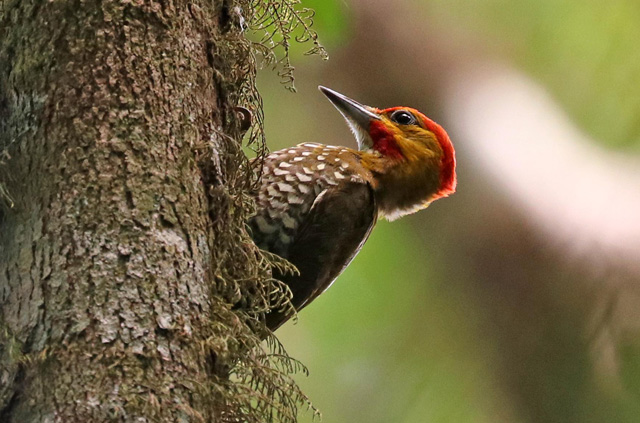
White-throated Woodpecker Photo: David Fisher
Sadiri’s tanager flocks didn’t fail to delight us, and one particular mob assembled in a perfect display of riotous color.
Tanager Mob Photo: Rich Hoyer
Our group was the first such birding tour to visit the recently improved Barba Azul Nature Reserve. We saw our first Blue-throated Macaws the afternoon of our arrival, eventually seeing a flock of seven of these highly endangered birds.
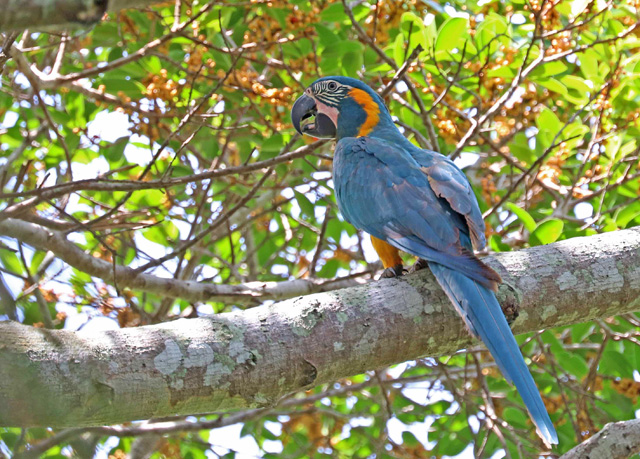
Blue-throated Macaw Photo: David Fisher
The birding here was terrifically fun, especially along the marshes of the Omi River that runs through the property – complete with Long-winged Harrier, Least Bittern, and Ash-throated Crake.
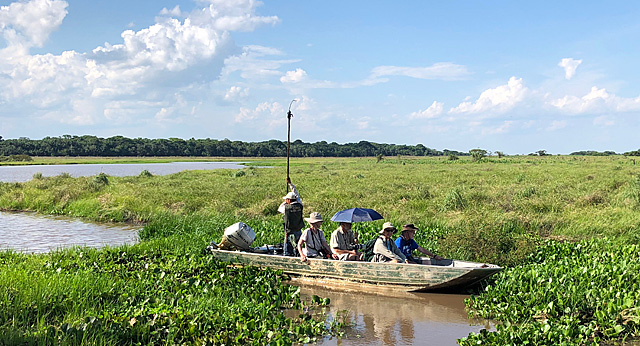
Boat ride at Barba Azul Photo: Rich Hoyer
The ungrazed and unburned expanses of seasonally flooded savanna are home to some very scarce birds, such as Cock-tailed Tyrant, where we watched one do its astonishing flight display at a female.
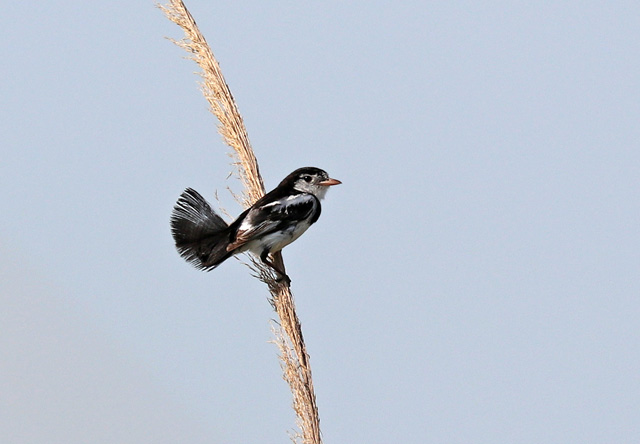
Cock-tailed Tyrant Photo: David Fisher
This place is also home to a good variety of mammals, and we watched Black-and-gold Howler Monkeys grunt in the trees, a Six-banded Armadillo cross the airstrip, and a Giant Anteater gallop across a pasture.
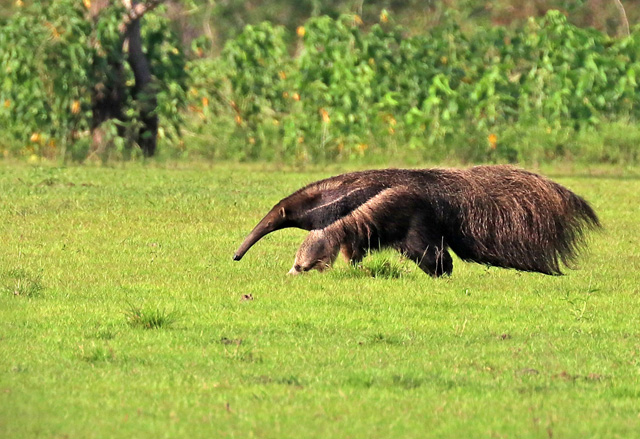
Giant Anteater Photo: David Fisher
October 23:
Rich Hoyer on his recent tour, Bolivia: The Chaco, Valle Zone, and Central Andes
The first of our two back-to-back Bolivia tours was a breeze, thanks to wonderful support from our multi-talented driver Herman, our ground agent, a small group, and birds everywhere. Our first day in Santa Cruz wasn’t just breezy, but downright windy, though we still started off with a big day list, amongst which was a pair of Green-barred Woodpeckers at a nest.
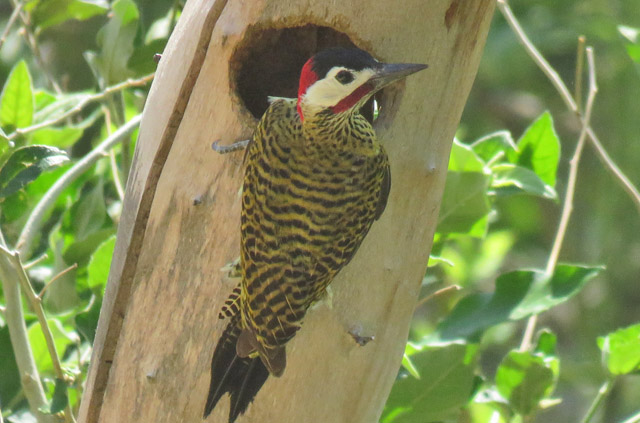
Our time in the Chaco was brilliant, with all of the expected species and more. Crested Gallito, Crested Hornero, and Lark-like Brushrunner showed well, leaving us to wonder why so many birds here have crests. Black-legged Seriema was perhaps the most iconic target, and they didn’t disappoint, with several seen on our drive east from Boyuibe.
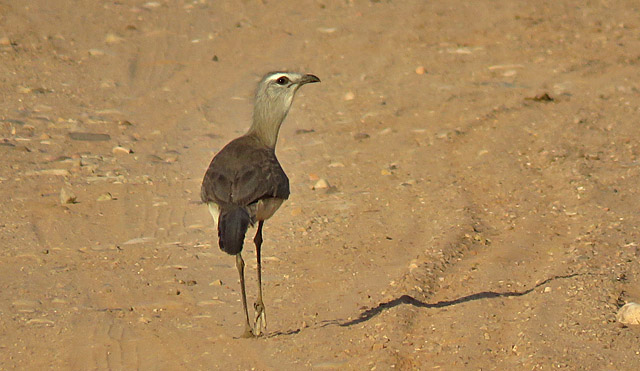
Another hoped-for species was Many-colored Chaco-Finch, and with effort we finally found a very cooperative individual of this lovely species.
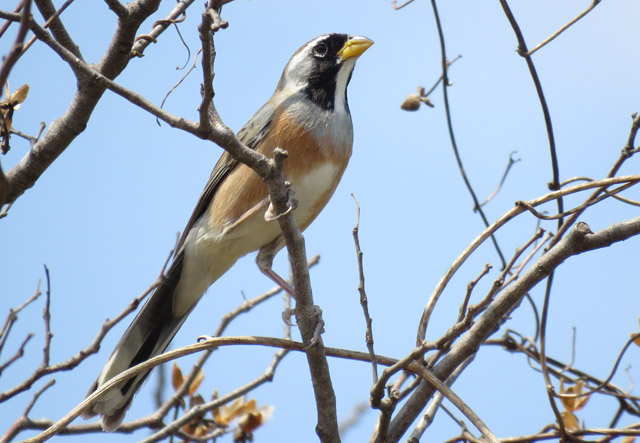
Almost any little body of water was likely to hold wintering water birds, and we had marvelous views of Brazilian Teal and Ringed Teal on several occasions.
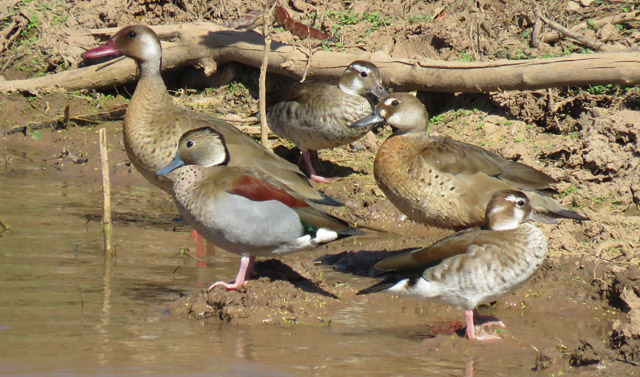
Exploring the habitats in the dry Valle Zone of the country’s center was a rich experience.
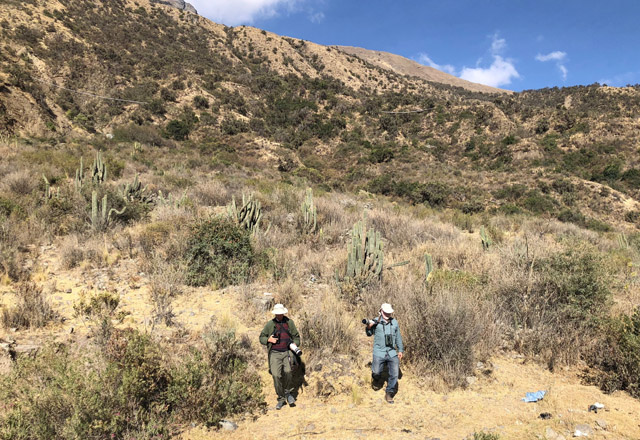
A close encounter with a Glittering-bellied Emerald here left an impression.
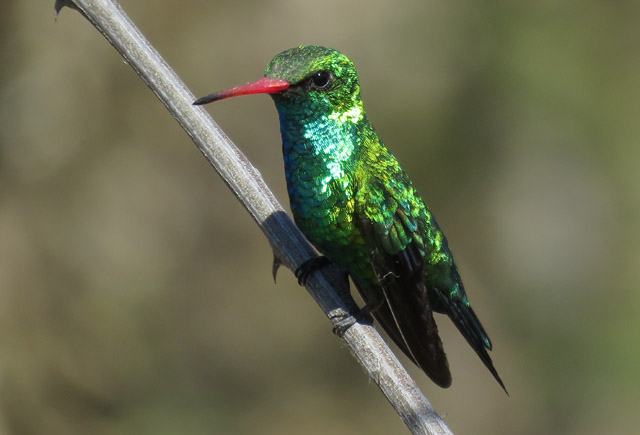
The most sought-after bird in this region is the rare endemic Red-fronted Macaw, and we had some great views of them.
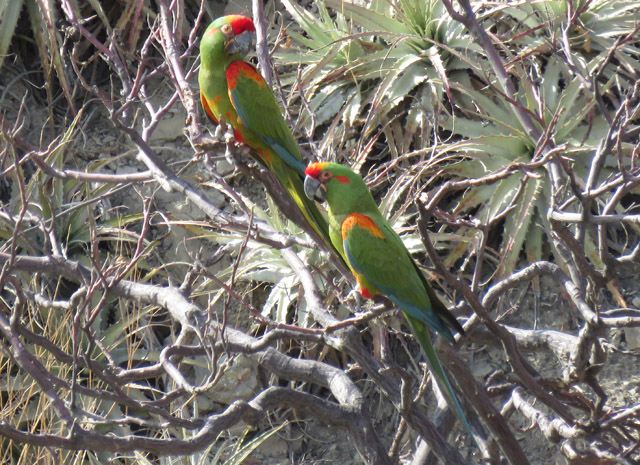
We finished the tour in the central Andes, admiring the scenery and some special birds at elevations up to 14,400 feet. Here we saw Bright-rumped Yellow-Finches, Taczanowski’s Ground-Tyrant, many White-winged Diuca-Finches, Cordilleran Canastero, and a speedy Aplomado Falcon.
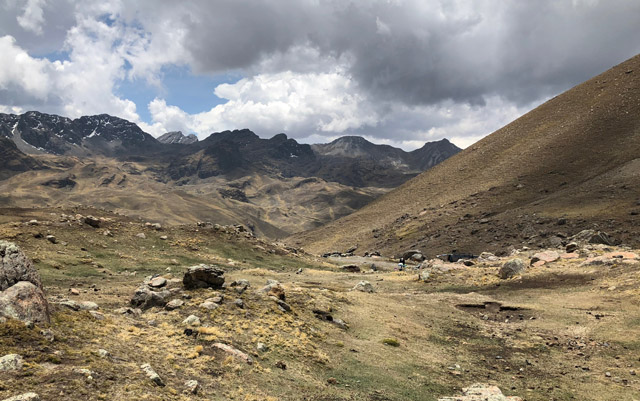
October 22:
Derek Lovitch on his recently completed tour, The Maine Coast in Fall, Monhegan Island.
From morning flights to diurnal migrants, from warblers to waterfowl, a week at on Monhegan Island, Maine, in the fall offers a variety of opportunities to observe migration. Thanks to changes in the weather and a late-week cold front, we witnessed the ebbs and flows of migration as we filled our time between delicious meals and island life. Eighteen species of warblers included sought-after Mourning and Bay-breasted and the island-rare Pine. Impressively, Cape May was one of our most common migrants on several days! Our rarest birds for out here were Snow Geese (and Island Bird for me!) and a Broad-winged Hawk, but we also enjoyed regionally-rare Lark Sparrow and Dickcissels. Add to that a falcon flight of Peregrines and Merlins, impressive shows of Northern Gannets, Monarch butterfly migration, a craft brewery, and magnificent scenery and you can see why birding on Monhegan is so special!
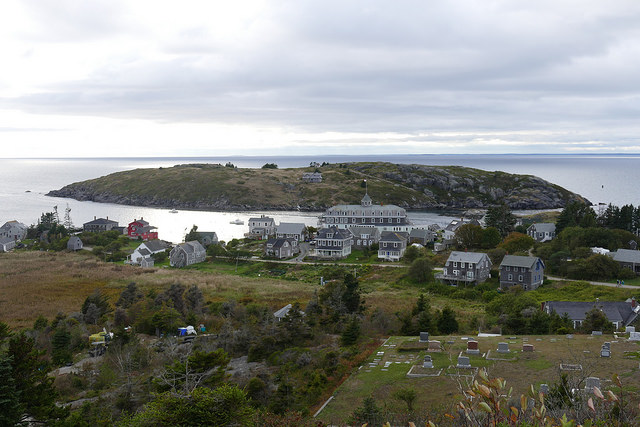
Monhegan is a comfortable island to visit - we stay in the big hotel at the back...
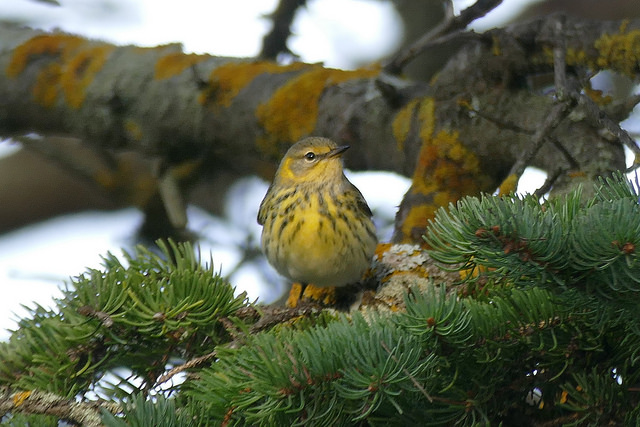
...with birds to look at, here a Cape May Warbler...
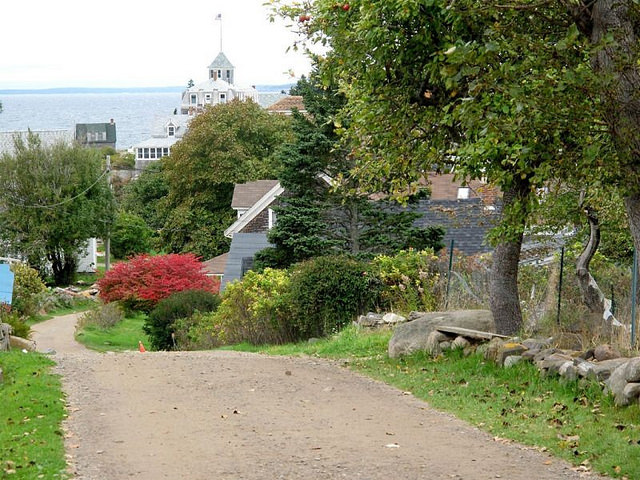
...and lovely lanes from which to bird...
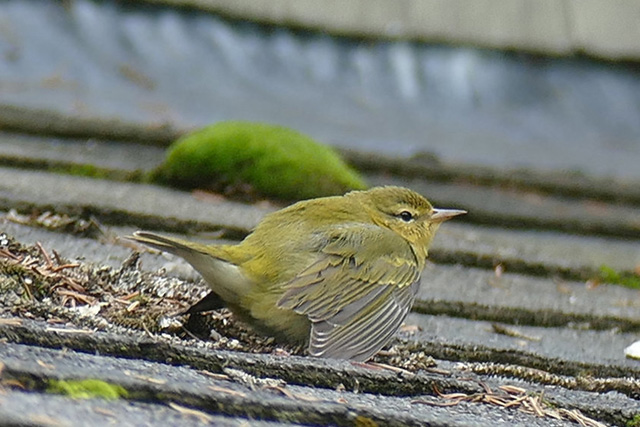
...and did I say birds to look at, here a Tennessee Warbler...

...and great Maine seafood...
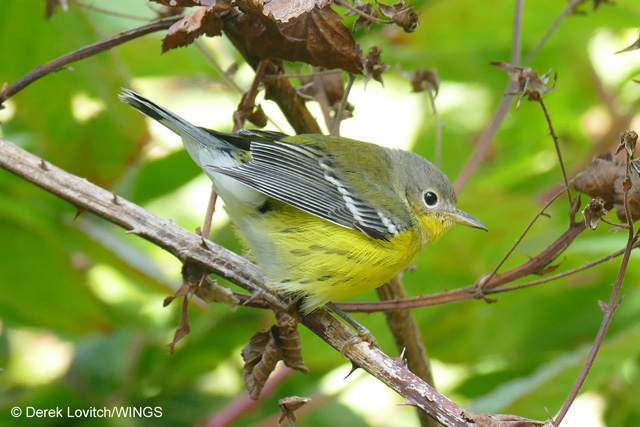
...and, yes, birds to look at, here a Magnolia Warbler.
September 25:
Jake Mohlmann on his recent tour, Arizona and Utah: Fall Migration in the Canyonlands
Our 2018 Arizona and Utah Canyonlands tour just wrapped up with 198 species of birds seen in 13 days. We meandered 2,000 miles through everything from the hot, cactus-studded desert to Utah’s highest Alpine Valleys in search of all things wild.
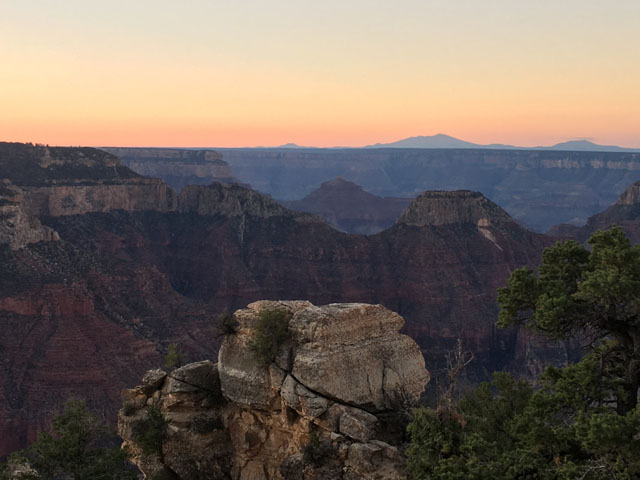
The vast Grand Canyon at sunset.
Beginning and ending in Phoenix allowed us to see a suite of Sonoran Desert specialties such as the colorful Broad-billed Hummingbird, quirky Gambel’s Quail, and riparian-obligate Abert’s Towhee. Several wren species were encountered including very close views of Canyon Wren in Zion National Park’s River Walk, ratcheting Cactus Wren at Boyce Thompson Arboretum, and Rock Wrens perched on what else, rocks.
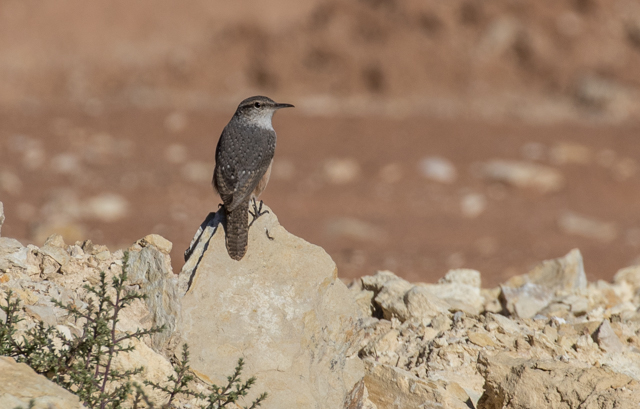
A confiding Rock Wren in Mt. Carmel
Endless Pine forests of Northern Arizona hosted such gems as 3 species of Nuthatch, Ruby-crowned and Golden-crowned Kinglets, and bright Green-tailed Towhees. Several deep canyons with walls towering thousands of feet overhead harbored Stellers Jays, Mountain Chickadees, and one particularly confiding American Dipper that ended up at arms length.
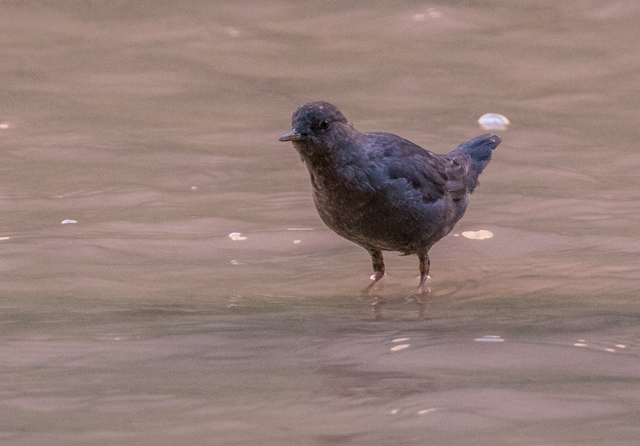
American Dipper as close as ever.
The vast Navajo Reservation had many memorable sites in the spire-filled Monument Valley and Canyon de Chelly National Monument, seemingly chiseled perfectly out of ancient sand dunes. Antelope Canyon, a well-used historical migration route for Pronghorn wowed us with its skinny swirling path through solid rock.
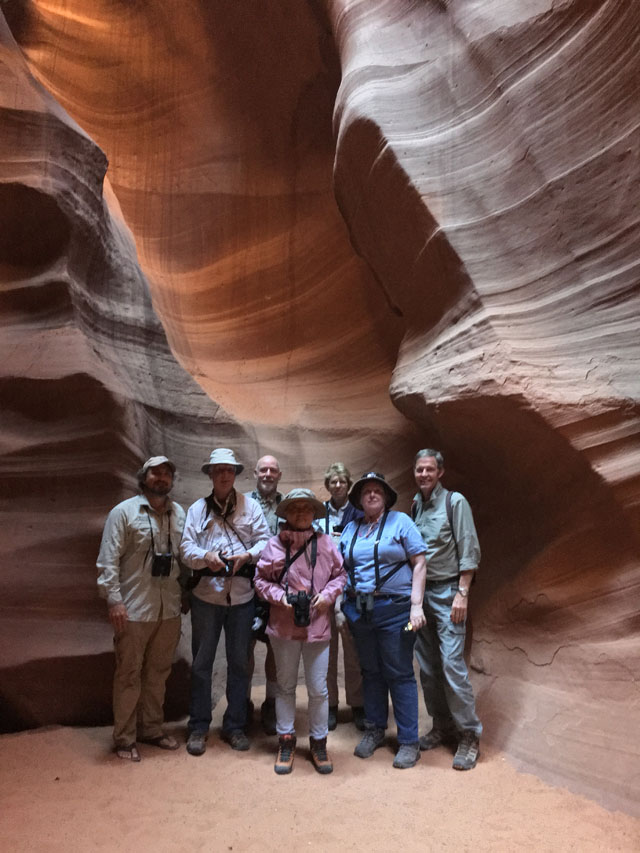
Our group in the fabulous Antelope Canyon.
Spending two entire days in the White Mountains of central Arizona allowed us to relax after our long journey and soak in several excellent bird sightings. At Luna Lake several surprises included a male Vermilion Flycatcher and pair of ‘Cactus’ Purple Martins very far from their normal desert haunts. Most surprising was a cooperative Blackpoll Warbler that mistakenly took the wrong route south after breeding in the far north.
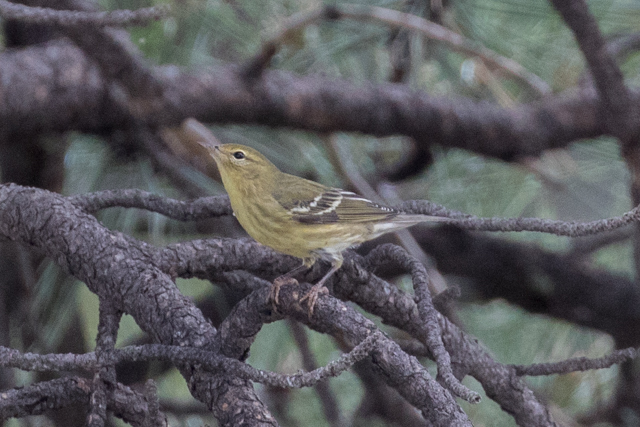
A complete surprise vagrant Blackpoll Warbler.
On our final day we traveled from the high coniferous forests down the Mogollon Rim, through Arizona’s ‘Little Grand Canyon’ the Salt River Gorge, and back into the hot desert in search of anything we missed. After picking through yet another flock of querulous Bushtits a major highlight was revealed when a male Painted Restart sang closely to us while defending its Sycamore-lined canyon.
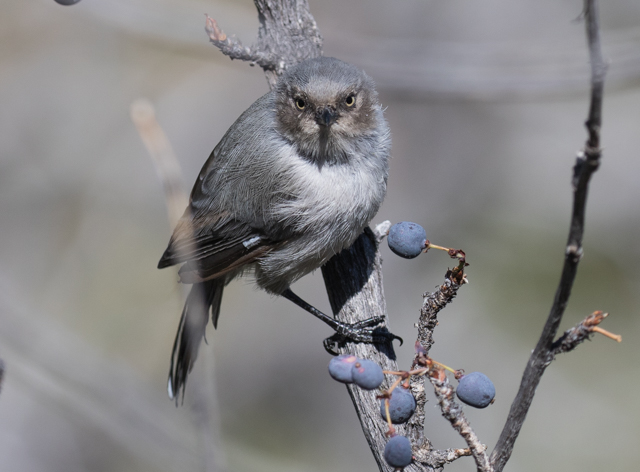
A Bushtit in for a close inspection!
September 22:
Rich Hoyer on his recent tour, Machu Picchu and the Manu-Kosñipata Road.
The numbers, variety, and rarity of birds on this year's tour to Machu Picchu and the Kosñipata Valley will be hard to beat. It was a fair bit cooler than usual, and with less rain than one might expect, and both made for great birding conditions.
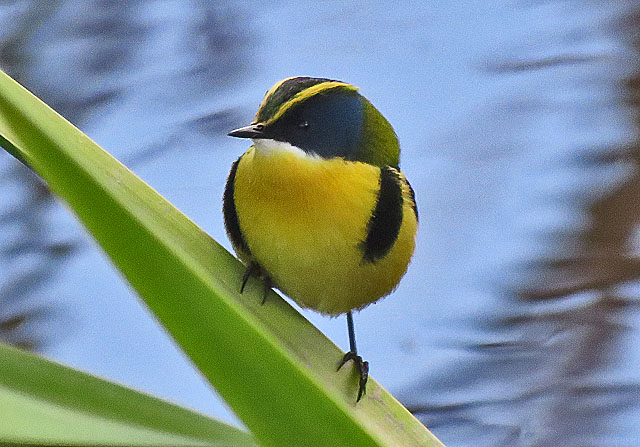
On our first day’s drive we had time for several birding stops including for this stunning Many-colored Rush Tyrant in the valley below Cusco.
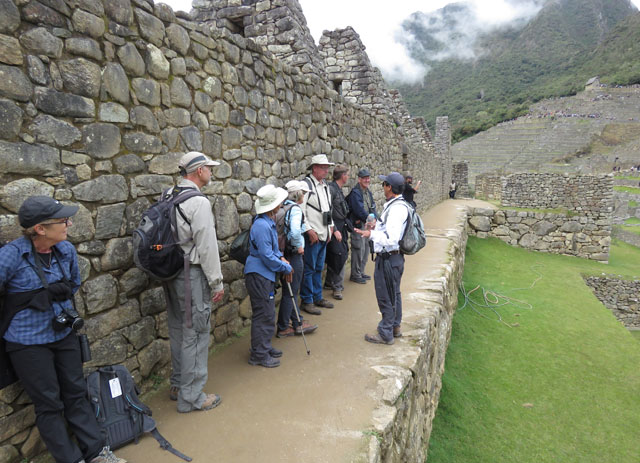
After our visit of Machu Picchu, birding began in earnest.
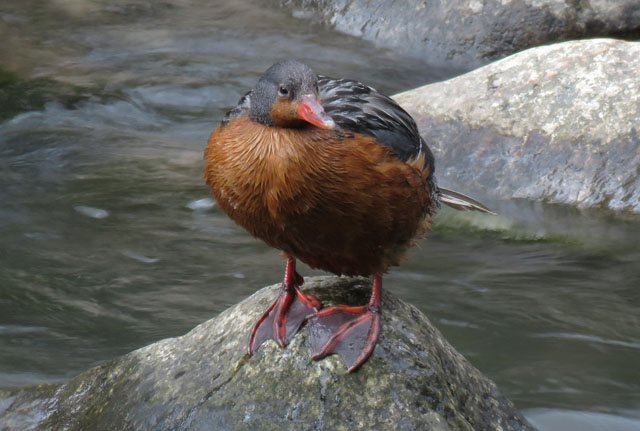
Just upstream from the town of Machu Picchu we had time to enjoy a pair of Torrent Ducks in the Urubamba River.
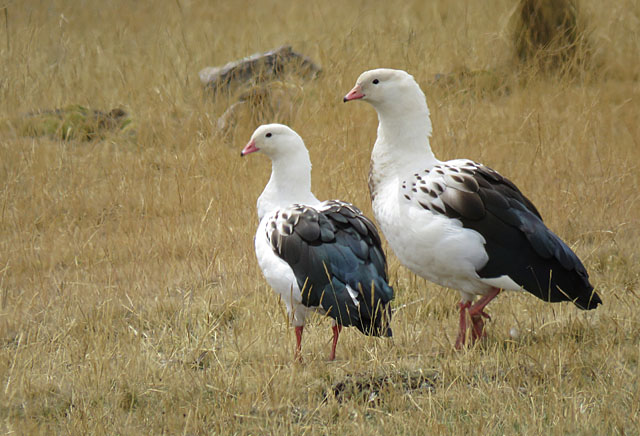
We traveled over a high pass where a pair of the very handsome Andean Goose was quite a surprise right next to the road.
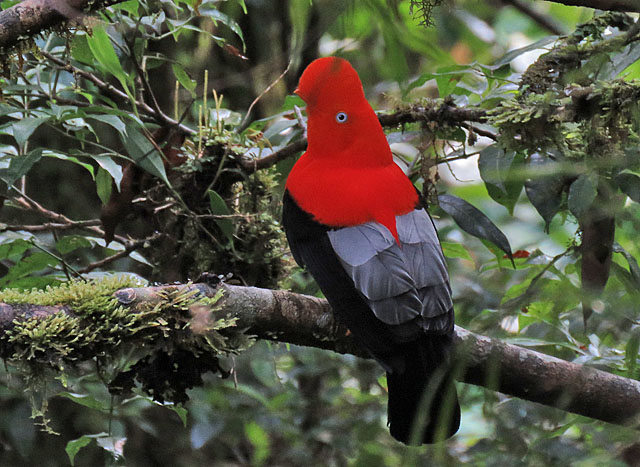
Then at the moderate elevations of San Pedro, our early morning visit to the very active Andean Cock-of-the-rock lek was an unforgettable highlight.
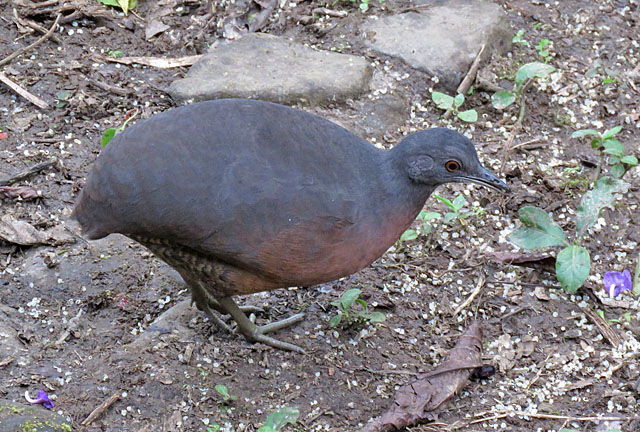
It was a nice surprise to learn that a Brown Tinamou recently has become acclimated to the bustling kitchen noise of our lodge near here, and we saw it twice during our stay.
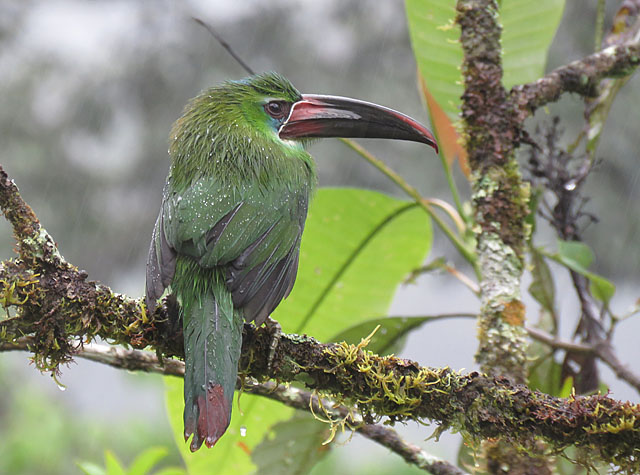
One stellar day began with views of a White-throated Antpitta, a pair of White-crowned Tapaculos, and a pair of Solitary Eagles soaring low overhead, but seeing both Blue-banded and the rarer Chestnut-tipped Toucanet (here) on the same day was really unexpected.
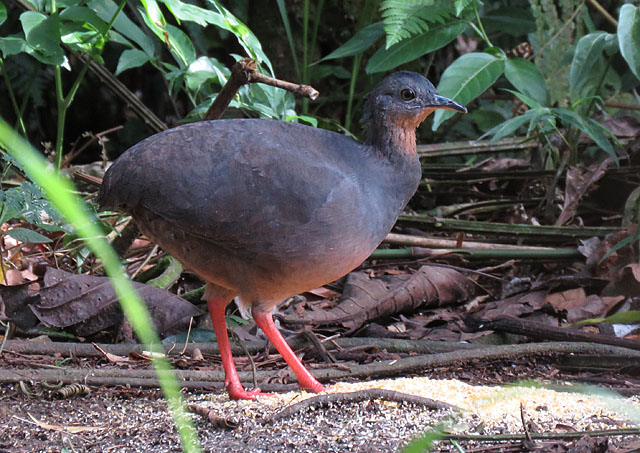
At our final lodging at Villa Carmen Biological Station, our bird list exploded with all the bamboo and lowland tropical diversity. Another surprise here was a feeding station that has been attracting tinamous, and nowhere can one get better views of a Black-capped Tinamou than this.
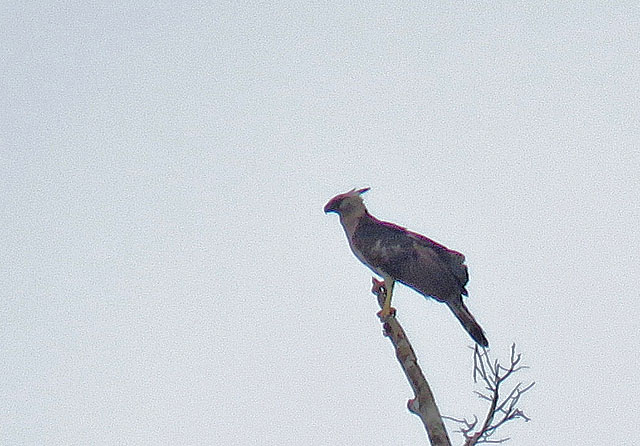
An incredible morning here involved a sighting of a mega-rare Crested Eagle that at first vanished within a minute of our finding it. It then magically reappeared on a nearby perch a few minutes later where we all had extensive views of it. If that weren’t enough, we found it again over an hour later maybe a kilometer away while at the same time a Black-and-white Hawk-Eagle soared overhead and performed a upside-down dive display. We were pinching ourselves the rest of the day.
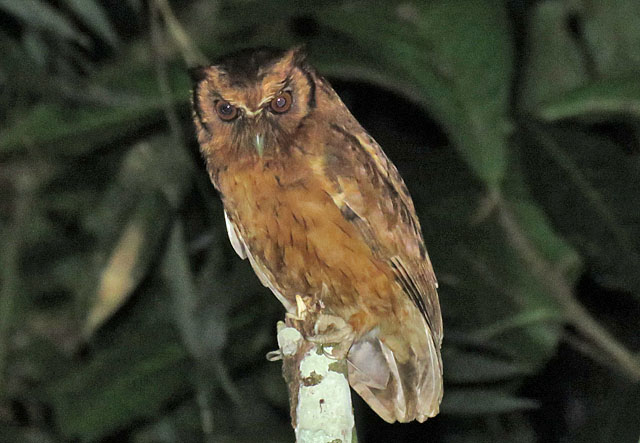
We did just a couple owling walks, but at Los Amigos we scored big, seeing Black-banded Owl, Tropical Screech-Owl, a Common Pauraque on a nest, two Black-headed Night Monkeys, and this Tawny-bellied Screech-Owl, all in about 45 minutes.
What surprises await us on our second tour to the jungle lodges on the Madre de Dios?
September 20:
Rich Hoyer on his just-finished tour, Oregon in Late Summer
It’s hard to imagine a more perfect tour than this year's Oregon in Late Summer. The weather was great, the birds always fascinating and captivating, and the group cohesion nothing short of phenomenal. The participants raved over the picnic lunches, the diversity of wildlife and scenery, and delicious dinners in some great restaurants.
In the western part of the state we caught up with Sooty Grouse and Northern Pygmy-Owl before we arrived at the coast to beautiful conditions.
We enjoyed some beach time...
...where banded Snowy Plovers told a story of successful conservation efforts.
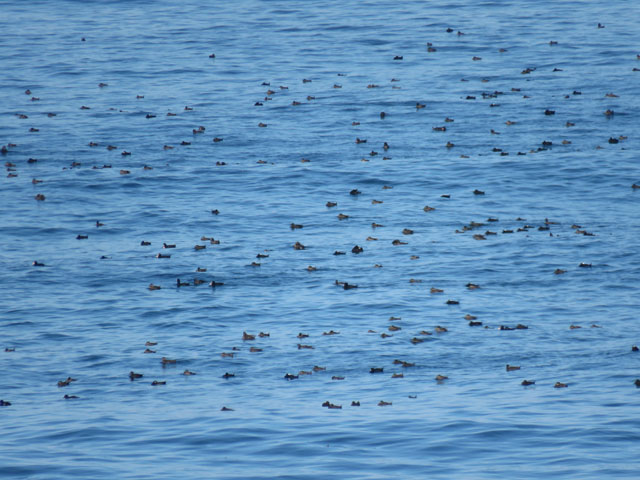
Unusual this year were the large numbers of Surf Scoters just offshore.
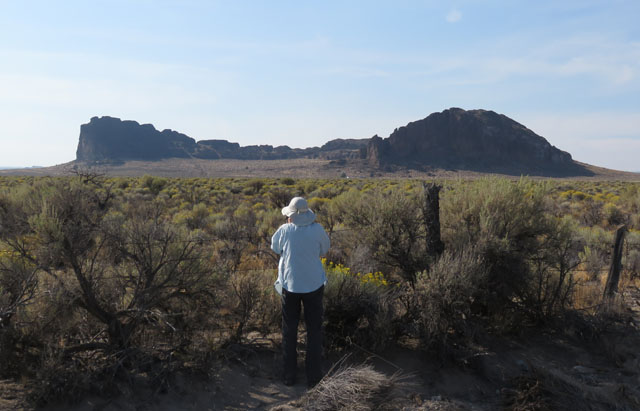
In a single day’s drive over the Cascade Mountains we found ourselves in a different world, in awe of the scenery and geology lessons provided by Fort Rock and many other formations.
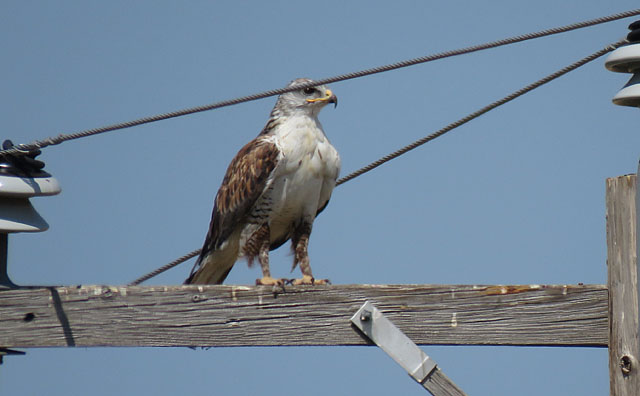
The birds were quite different here as well, with this Ferruginous Hawk posing nicely along the highway.
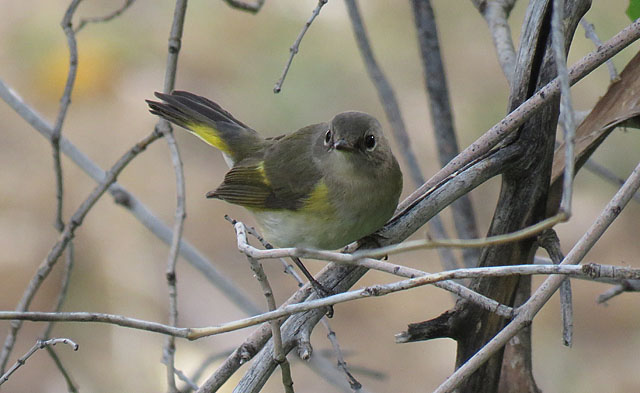
Malheur National Wildlife Refuge and the surrounding areas were excellent. An American Redstart at the refuge headquarters was a fun rarity.
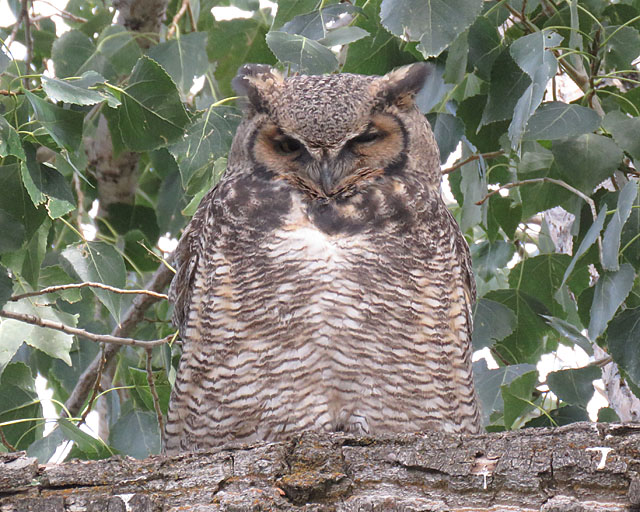
This Great Horned Owl at the refuge headquarters deigned to open one eye for us.
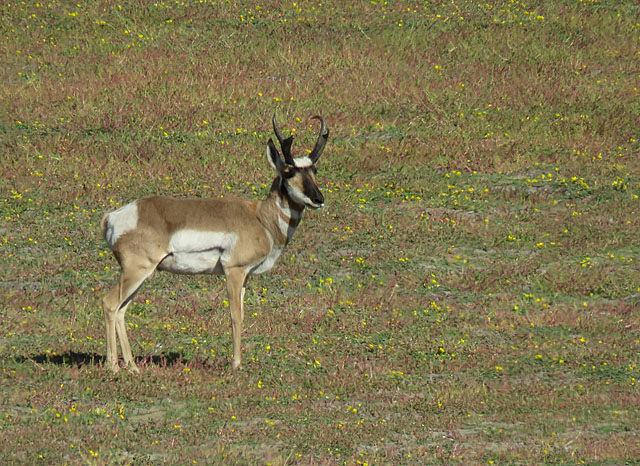
Mammals played a big part in this year’s tour: an American Pronghorn stood watch in a field of wildflowers.
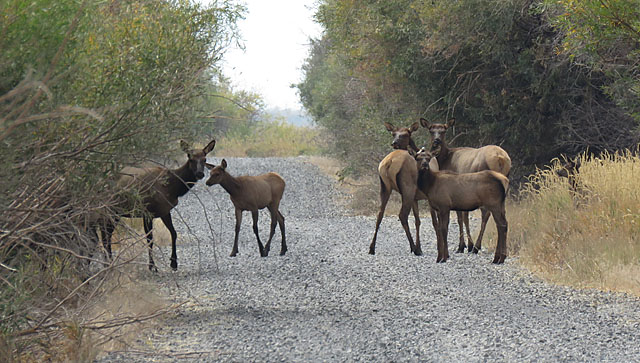
We were surprised by a family group of Wapiti in the refuge’s main road while at the very same moment being awed by a Cooper’s Hawk, a Coyote, and a Long-tailed Weasel.
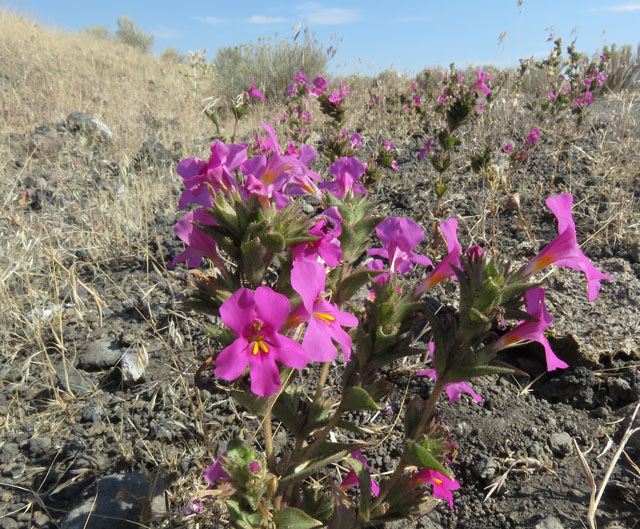
Springtime and early summer are better times for wildflowers, but this Cusick’s Monkeyflower persists in the driest and hottest time of year.
Closed much of the year by snow, the Steens Mountain road, Oregon's highest, provided a rare treat with the most unbelievable vistas.
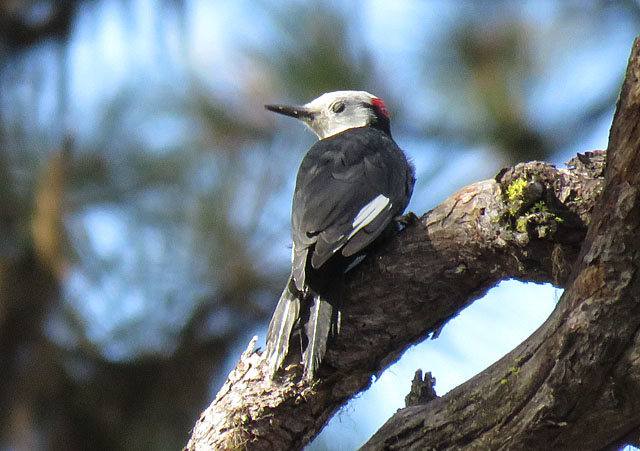
White-headed Woodpecker is usually quite easy, but this year it played elusive until our last-minute opportunity on the drive back to Portland. Then a pair performed just beautifully, earning it favorite bird of the tour.
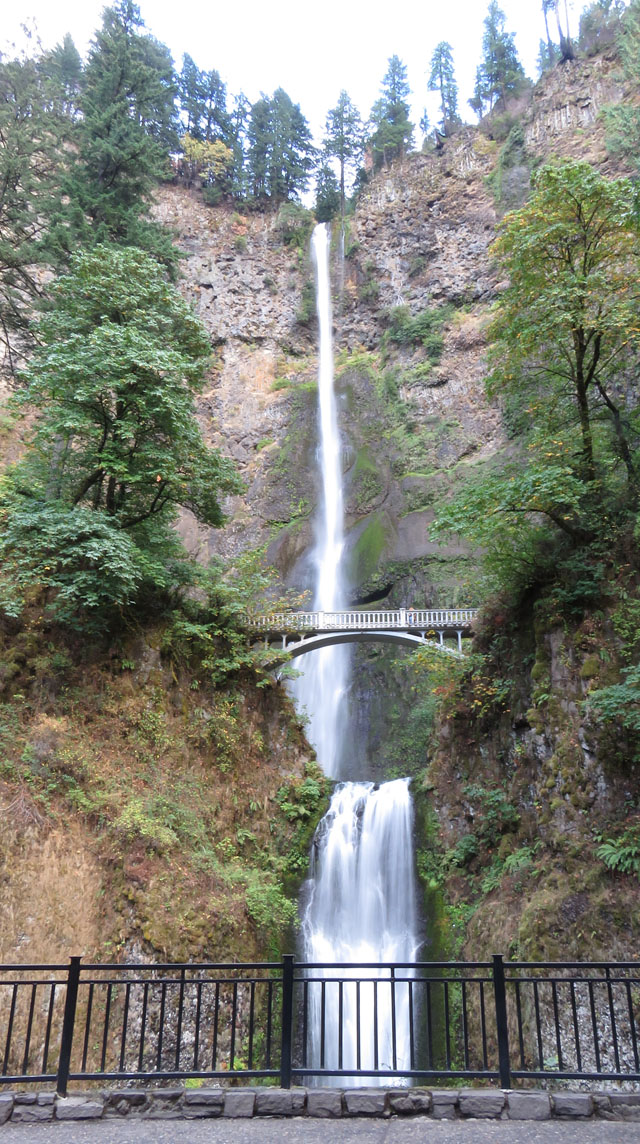
A final dinner in sight of the magnificent Multnomah Falls was a fitting end to the main tour.
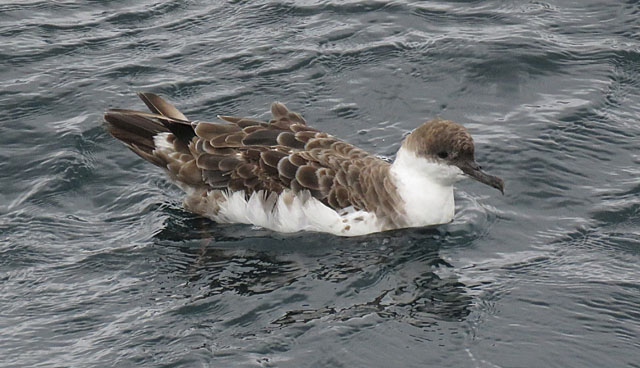
Those who took part on the pelagic extension saw unbelievable numbers of birds up to 30 miles from shore, the highlight of which was this Great Shearwater, a third record for Oregon.
September 4:
Jon Dunn on his recently completed tour, Arizona: Second Spring
We experienced a weak monsoon this year and the lack of rain meant warmer than normal temperatures. Still we saw nearly all of the expected species, more than 200 in all, and a few surprises; highlights included a pair of Rose-throated Becards nesting along the Santa Cruz River near Tumacocori National Monument, a cooperative male Elegant Trogon in Madera Canyon, Five-striped Sparrow in Box Canyon, five Black-capped Gnatcatchers around the Santa Rita Mountains, eleven species of hummingbirds including a half dozen Lucifer Hummingbirds, a pair of Montezuma Quail, excellent views of both Crissal and Bendire’s Thrasher, Rufous-capped Warbler, and dozens (mostly adult males) of Lazuli Buntings. A Fulvous Whistling-Duck (Green Valley) and a Groove-billed Ani (Whitewater Draw) were rarities for Arizona. Non avian highlights included a family of Ringtails, a White-nosed Coati, a Black-tailed Rattlesnake, Pronghorn, many lizards, and a Western Diamondback.
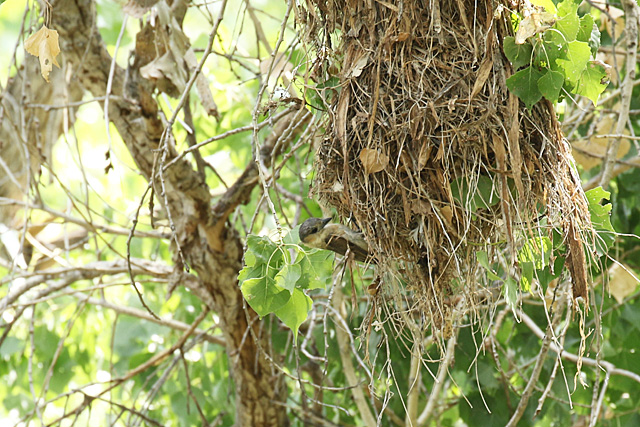
Female Rose-throated Becard at nest
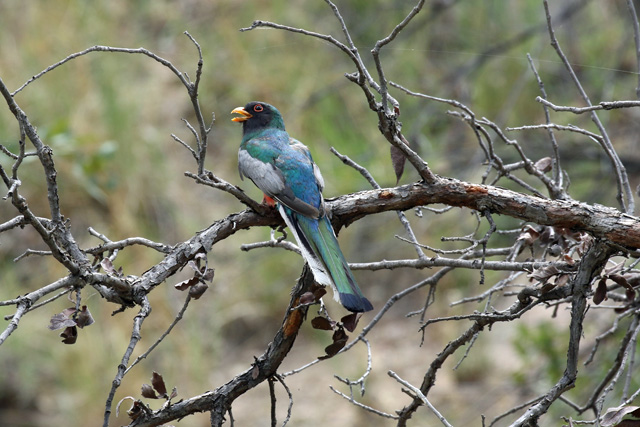
Male Elegant Trogon
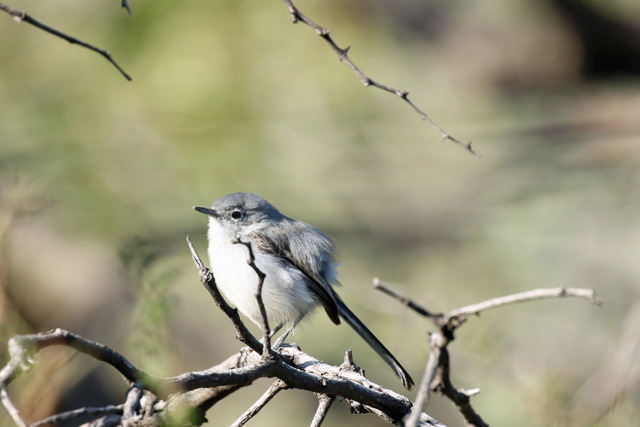
Black-capped Gnatcatcher
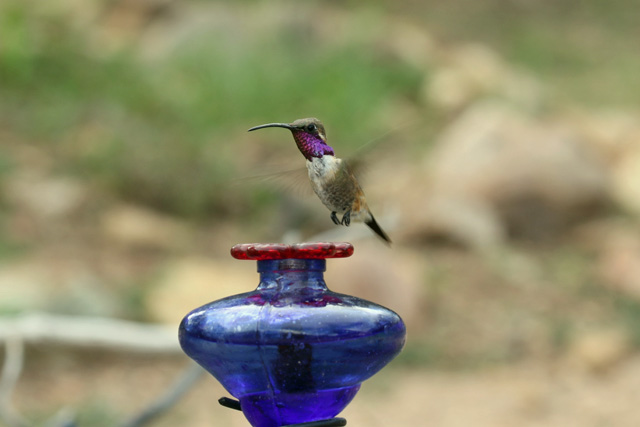
Lucifer Hummingbird
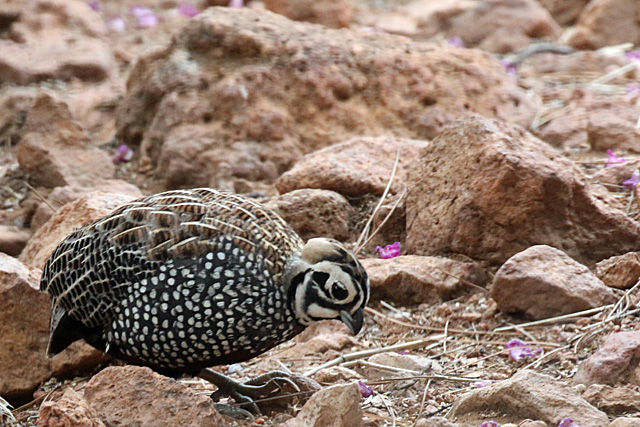
Montezuma Quail
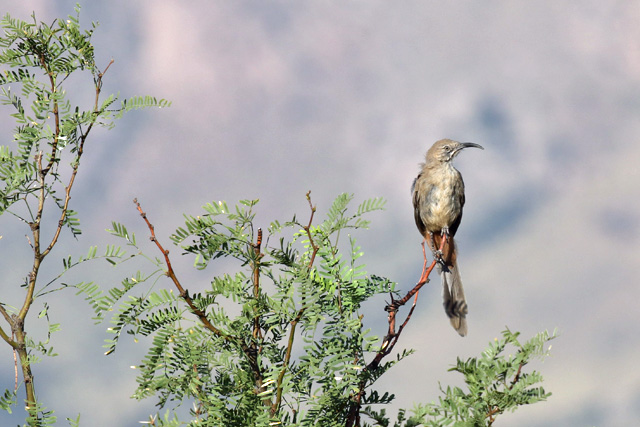
Crissal Thrasher
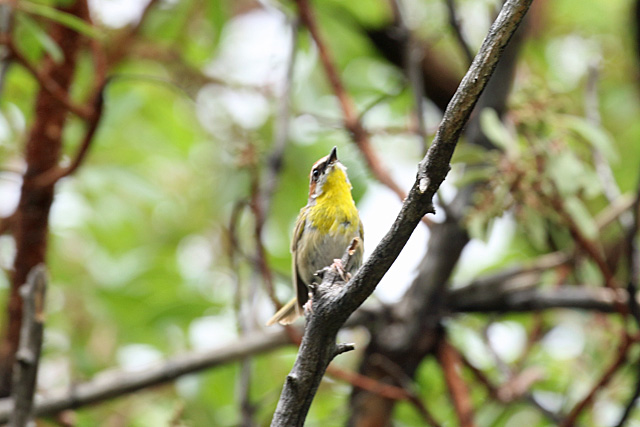
Rufous-capped Warbler
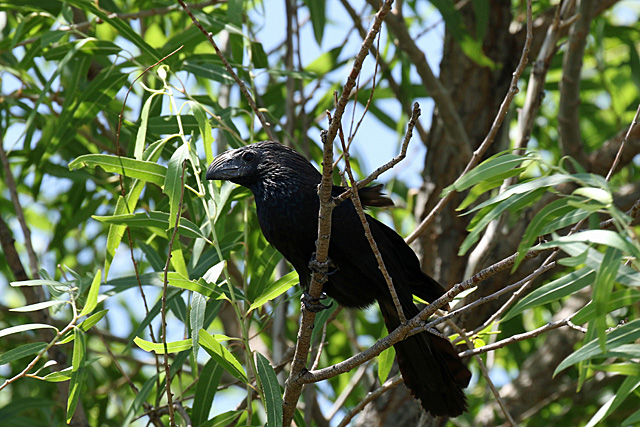
Groove-billed Ani
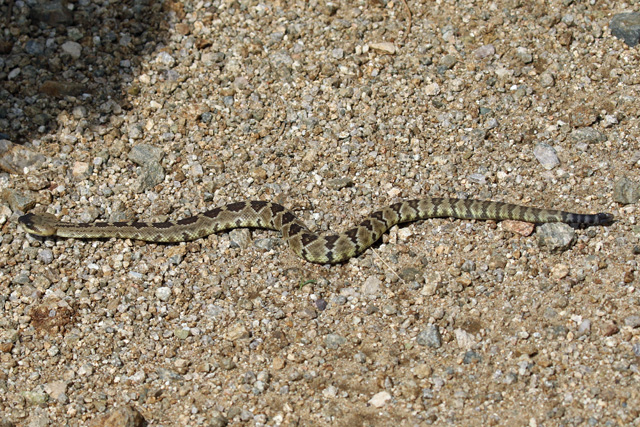
Black-tailed Rattlesnake
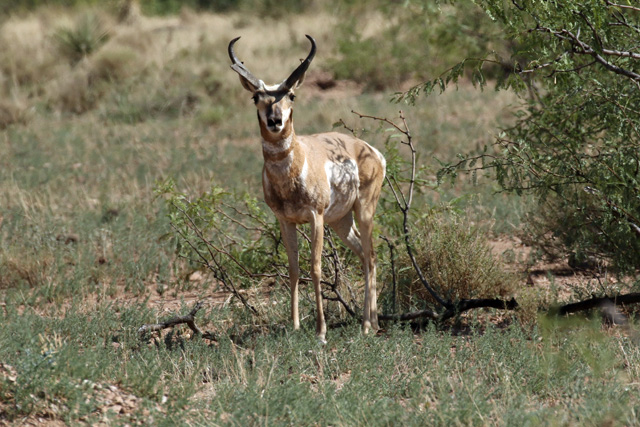
Pronghorn
August 28:
Luke Seitz on his recent cruise to Svalbard
The Norwegian archipelago of Svalbard is superb. Located between Norway and the North Pole, the rugged landscapes of glaciers and tundra are home to spectacular wildlife and remarkable scenery. We started in the small town of Longyearbyen, where we watched King Eiders in the harbor, Parasitic Jaegers coursing over the tundra, and a colony of entertaining Common Eiders. Among the many highlights was the abundance of Purple Sandpipers, singing and displaying and dotting the mudflats and tundra, a far different context from the rocky coastline of the northeastern United States in winter…
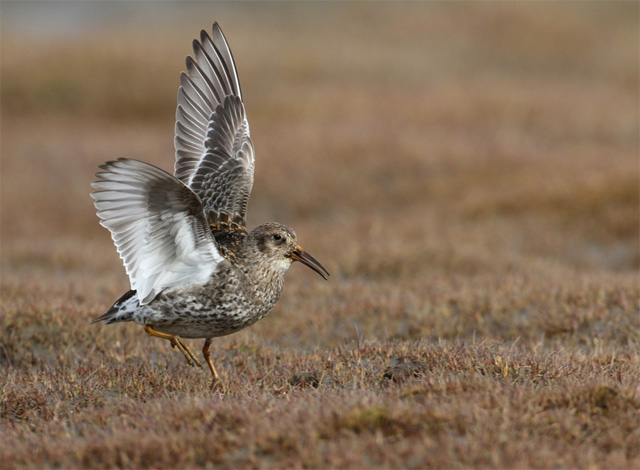
We boarded our ship, the M/V Ortelius, and started cruising north off the western coast of Svalbard. Our goal was to reach pack ice, which took some time to find. Once we did, however, we were treated to a courting pair of Polar Bears. The mating season is usually long over by the time cruises are here in June, so we counted ourselves very fortunate to watch the male and female for several hours. They chased each other, smelled each other, and occasionally just lay down facing each other, a few inches apart, gazing longingly into each other’s eyes. It was magical!
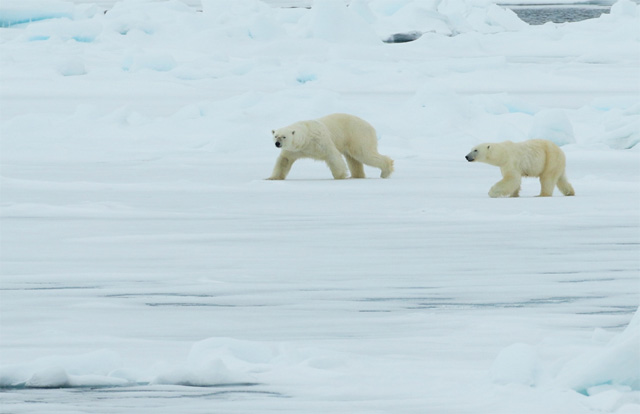
Although bird diversity is low in this part of the world, we spent plenty of time studying the abundant alcids, kittiwakes, and fulmars that were constantly in view. One morning, we took the zodiacs to the base of Alkefjellet, a long cliff that hosts tens of thousands of breeding Thick-billed Murres. The skies were darkened with an endless flow of murres, while the nearby ocean was carpeted with thousands more…
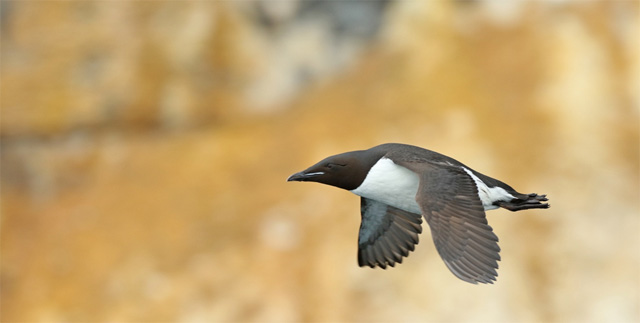
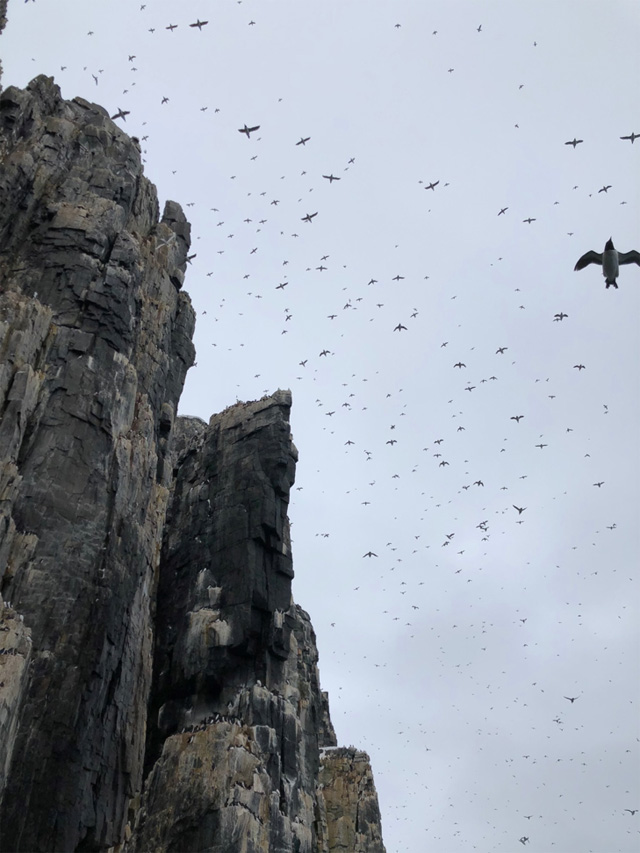
…and on another afternoon, we landed on a beach that hosted a haul-out of Walrus, lazily enjoying the endless Arctic sun…
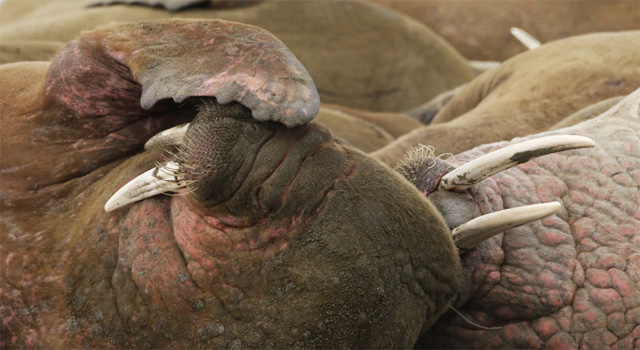
Of course, I can’t talk about Svalbard without mentioning Ivory Gulls. Finding blindingly white birds in a vast expanse of blindingly white ice (and fog) is not the world’s easiest task, but we managed to find eight of these iconic Arctic gulls! I missed a few flyby photos, but here’s a juvenile resting on the ice…
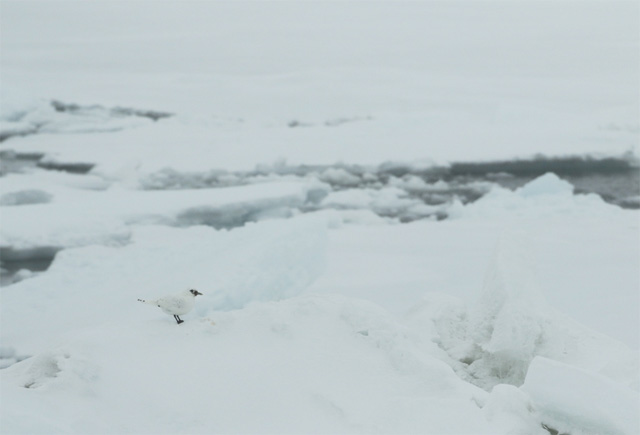
All too soon, we found ourselves back in Longyearbyen after a wonderful Arctic experience. I can’t wait to return next year!
August 15:
Susan Myers and Greg Greene on their recent scouting trip to Peninsular Malaysa
We just wrapped up an informative scouting trip to Peninsular Malaysia and are excited about next year’s tour. While Borneo seems to draw most of the attention from regional birders (for good reason), Peninsular Malaysia is a gem by itself and should be considered one of the top destinations in Southeast Asia.
Some of the highlights from our trip, and what you may see on next year’s tour, include Malaysian Rail-babbler, Malaysian and Mountain Peacock-pheasant, as well as seven species of pitta, 12 barbets, and nine hornbills. One shouldn’t forget the large diversity of kingfishers and woodpeckers, which are arguably some of the most spectacular in the world. With its system of well-protected nature reserves, modern infrastructure, and great food, Peninsular Malaysia should be on your list for the next birding adventure! To learn more about joining us in 2019, visit our website: https://wingsbirds.com/tours/peninsular-malaysia/ . A selection of images from our recent trip follows.
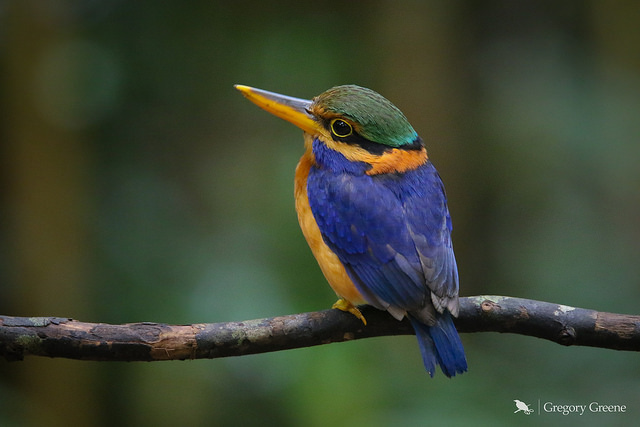
Rufous-collared Kingfisher
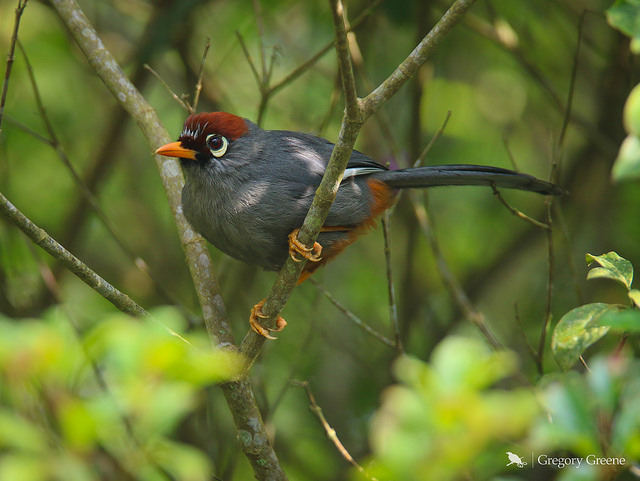
Chestnut-capped Laughingthrush
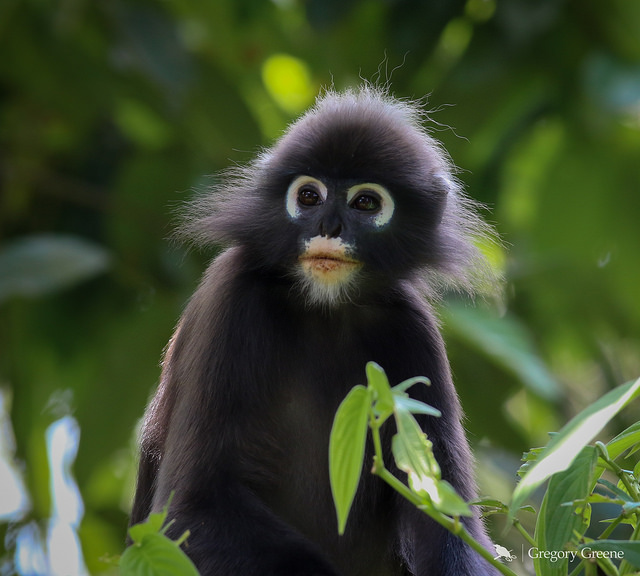
Dusky Leaf-monkey
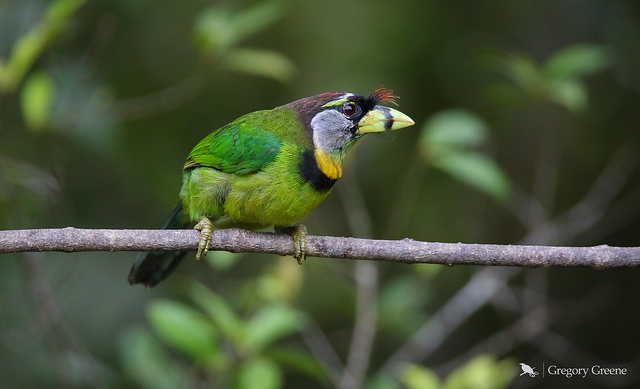
Fire-tufted Barbet
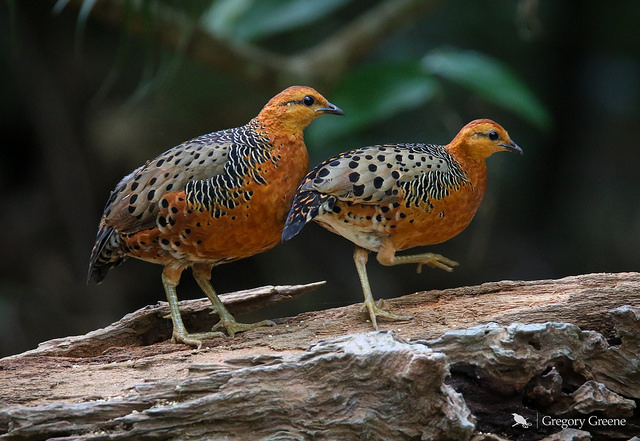
Ferruginous Partridge
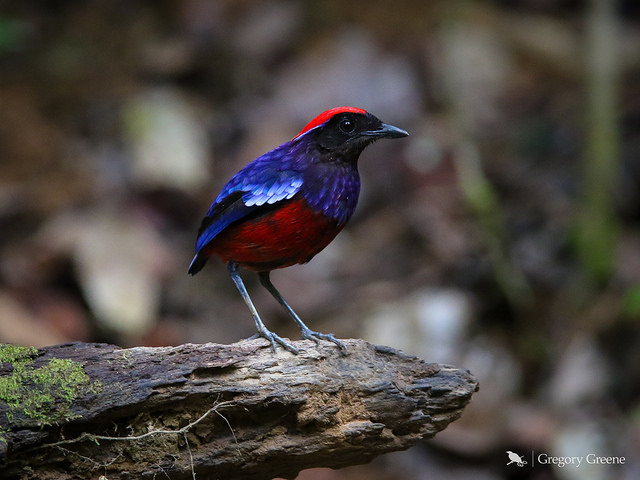
Garnet Pitta
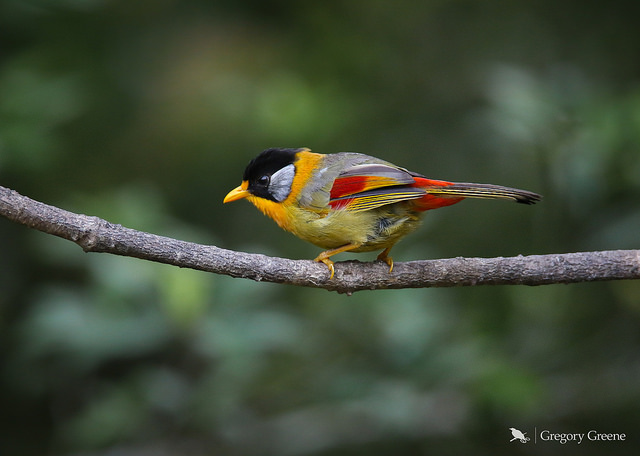
Silver-eared Mesia
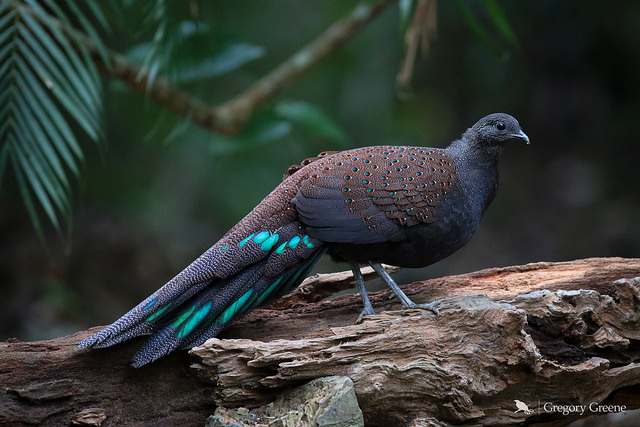
Mountain Peacock Pheasant
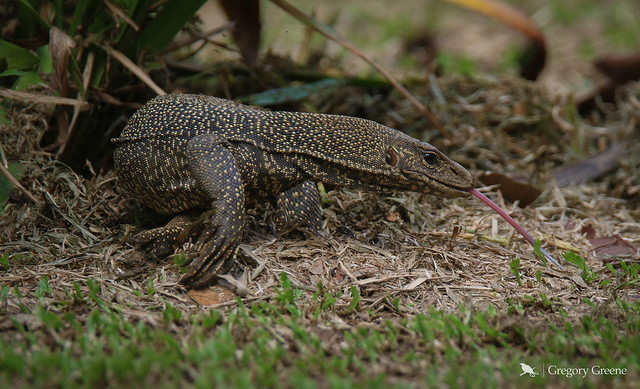
Water monitor

